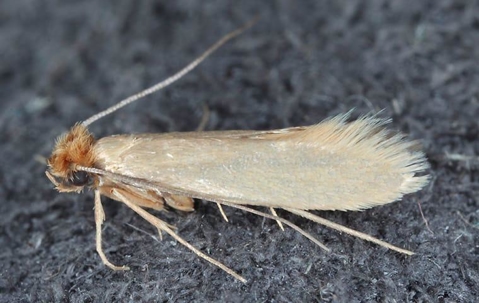In the dead of night, a myriad of dark and mysterious creatures come out to play. One of the most well-known nocturnal members of the animal kingdom lies in the class Insecta — the moth. The vast majority of these fluttery bugs are completely harmless, but quite frankly, not all moths are equally innocent.
One family of these nocturnal insects that can be particularly devastating is the clothes moth. While other species are named after the designs on their wings or fuzzy bodies, the clothes moth derives its name from their young ones' voracious appetites for the same fabrics that humans wear. Beware! If you spot these hungry little pests in your Streator home, all the clothes in your closets are in danger.
The Life Cycle Of The Clothing Moth
Like any other moth or butterfly, the clothing moth's life cycle has four distinct segments — the egg, larva, pupa, and adult stages.
Egg: Over a hundred eggs can be laid by a single moth, which will, after about a week, hatch and begin their larval stage.
Larva: This tiny, legless wriggler may look harmless, but is, in fact, the most destructive in the cycle. It feeds entirely off the wool, silk, and other fibers on various articles of clothing, and can remain in this larval stage for over two years.
Pupa: When they reach an appropriate size and become comfortable temperature-wise, a larva will build itself a silky cocoon where it remains for the duration of its pupal stage. Completely stationary in this phase, the clothing moth transforms completely in little over a week.
Adult: Finally, the clothing moth has aged fully into its adult stage. These grown-up moths do not actually eat clothing themselves but will seek out a warm, clothing-filled locale to lay their eggs. If spotted in your Streator home, it is likely the infestation cycle has already begun.
How Clothing Moths Destroy Fabrics
As the larvae of a clothing moth cannot drink the way fully-grown moths do, they must consume fibers from clothes, even rugs, and carpets, to survive. Due to their inability to drink, these larvae prefer eating clothes and carpets with spill residue left on them or articles left in a humid environment. Because they are so small, the effects of a single clothing moth larva are unnoticeable for quite a while. But, as time goes on, and you factor all its siblings into the equation, frayed ends of fibers, holes, and other forms of significant damage become all too visible.
Locking Clothing Moths Out Of Your Streator Closets
Considering how difficult it is to recognize the effects of a clothes moth infestation unless it's too late, it is incredibly important to take precautionary measures against the insects. There are a number of beneficial prevention strategies you can use today in your home in Streator, regardless of your situation!
Look out for any cracks or open spaces in doors through which clothes moths can squeeze. Be extra quick to patch up holes in screen doors!
Adjust the lighting around or inside your closets. The old convention of moths going wild for light sources still rings true, as far as adult clothing moths are concerned.
Keep food away from your wardrobe and carpets to eliminate the stains they can cause.
Clean out your closets regularly to check for eggs or pupae hidden in corners and keep your shelves clean.
Utilize proper storage containers by placing hanging clothes like suits in garment bags and folded up articles in plastic bins. Also, make sure everything is airtight.
If you have an infestation and feel overwhelmed, hire a professional to assist you! There's no moth blight too strong for an expert to handle.
Do it yourself prevention tips can certainly always be useful, but no measure can neutralize an influx of fabric-hungry bugs quite like the swift hand of a pest control specialist. If you really want your Streator house free from the threat of clothing moths, consider looking to a professional for further advice or assistance. Contact Quik-Kill today and keep your closets clean!

